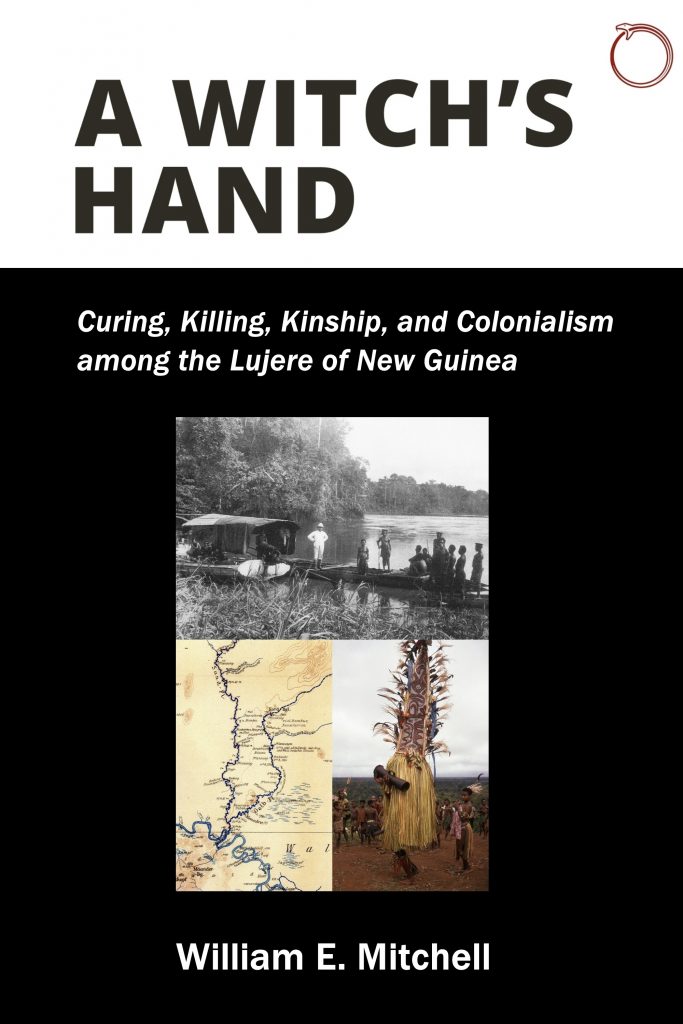Curing, Killing, Kinship, and Colonialism
among the Lujere of New Guinea
By William E. Mitchell
From 1971 to 1972, William E. Mitchell undertook fieldwork on suffering and healing among the Lujere of Papua New Guinea’s Upper Sepik River Basin. At a time when it was not yet common to make colonial agencies a subject of anthropological study, Mitchell carefully located his research on Lujere practices in the framework of a history of colonization that surrounded the Lujere with a shifting array of Western institutions, dramatically changing their society forever. Mitchell’s work has been well known among anthropologists of Oceania, but the material in this book has remained unpublished until now.
In this major new work, Mitchell revisits his early fieldwork with a three-part study of the history of colonial rule in the region, the social organization of Lujere life at the time, and the forms of affliction, witchcraft, and curing that preoccupied them. Furthermore, Mitchell offers the first sweeping cross-cultural survey of sanguma (magical murder) in Oceania. The book presents a vivid portrait of a society that has since changed dramatically as well as an approach to anthropology that was typical of the era. This is a significant contribution to the ethnography of Papua New Guinea and is sure to be an invaluable source for researchers of Melanesia, medical anthropologists, and scholars of kinship, myth, and ritual.
“Blending history and ethnography, this book offers a long-term monographic vision of one of Papua New Guinea’s last communities to enter modernity. Contextualized in this way and coupled with a broad comparative perspective, Mitchell’s presentation of forms of ‘magical’ aggression among the Lujere of the Upper Sepik constitutes a masterly contribution to the anthropology of invisible attacks on persons in Papua New Guinea.”
— Pierre Lemonnier, author of Mundane Objects: Materiality and Non-verbal Communication and co-author of Drumming to Forget: Ordinary Life and Ceremonies among a Papua New Guinea Society of Forest Dwellers
“A Witch’s Hand is the very stuff of good ethnography, a treasure trove of material resplendent with sensitive and honest insights. Stylishly written, with delightful vignettes complemented by analysis tied into broader issues of concern to anthropologists, it brilliantly captures the local Zeitgeist of the egalitarian Lujere people in an isolated part of New Guinea in the 1970s. A superb study of how colonialism, through its agents, slowly but surely crept into Lujere hamlets; a powerful case for why anthropologists need to take kinship seriously; and a riveting and original study breaking new ground on magic and associated beliefs, it can also be read as a unique ethnography of creating an ethnography. This is Mitchell at his creative best.”
— Robert Gordon, author of South Africa’s Dream: Ethnologists and Apartheid in Namibia, The Bushman Myth and the Making of a Namibian Underclass, co-author of Law and Order in the New Guinea Highlands, among many other authored and edited books.
William E. Mitchell (1927–2022) conducted fieldwork among the Wape and Lujere peoples of Papua New Guinea in the 1970s, a pivotal time of transition from colonial rule. He taught anthropology at the University of Vermont from 1965 to 1996 and published Kinship, Ethnicity and Voluntary Associations: Jewish Family Life in New York City, based on his first fieldwork, and The Bamboo Fire: Fieldwork with the New Guinea Wape. After retiring, he heeded a colleague’s urging to write up his Lujere fieldnotes, amplifying them with extensive archival, historical, and comparative data. This project culminated in A Witch’s Hand, which he completed only weeks before his death at 95.
